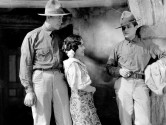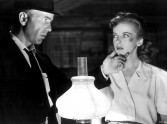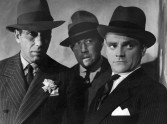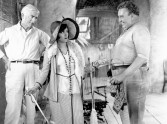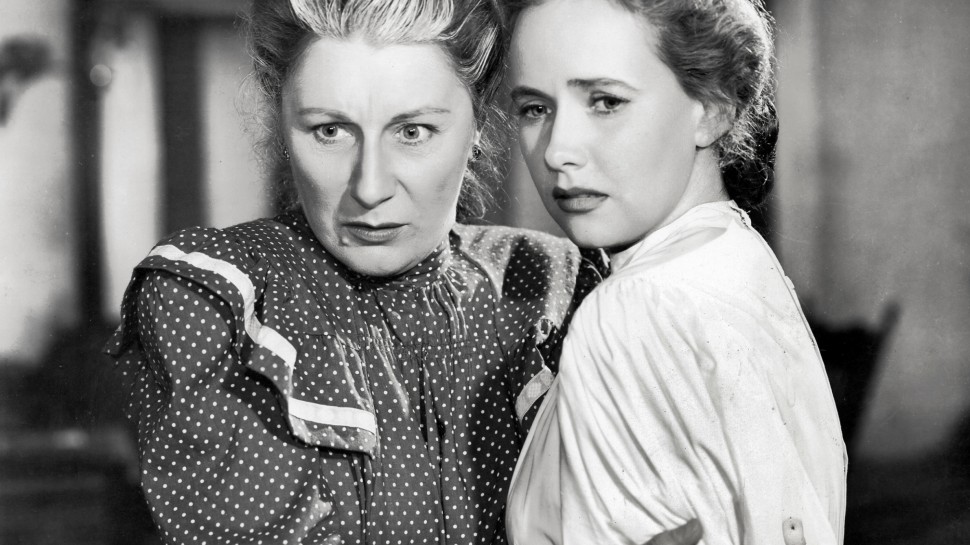
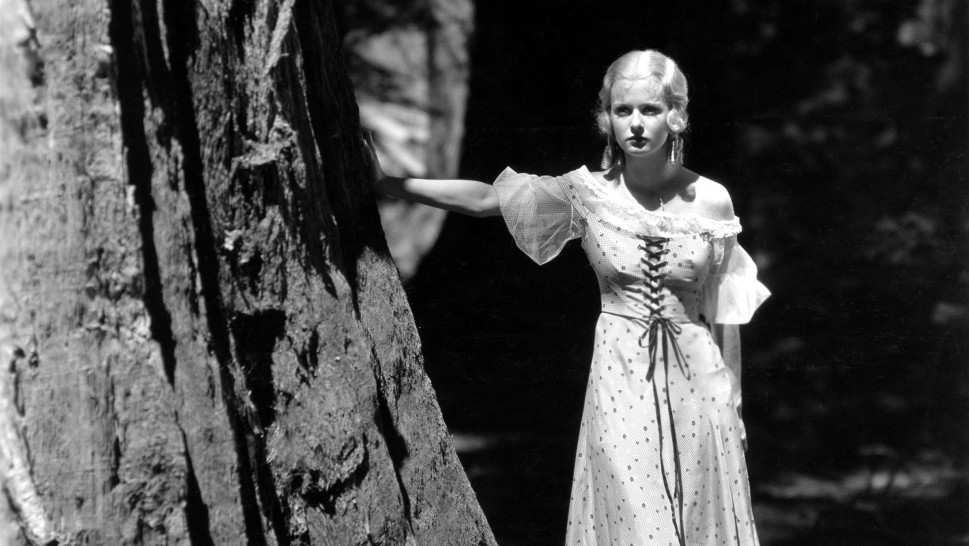
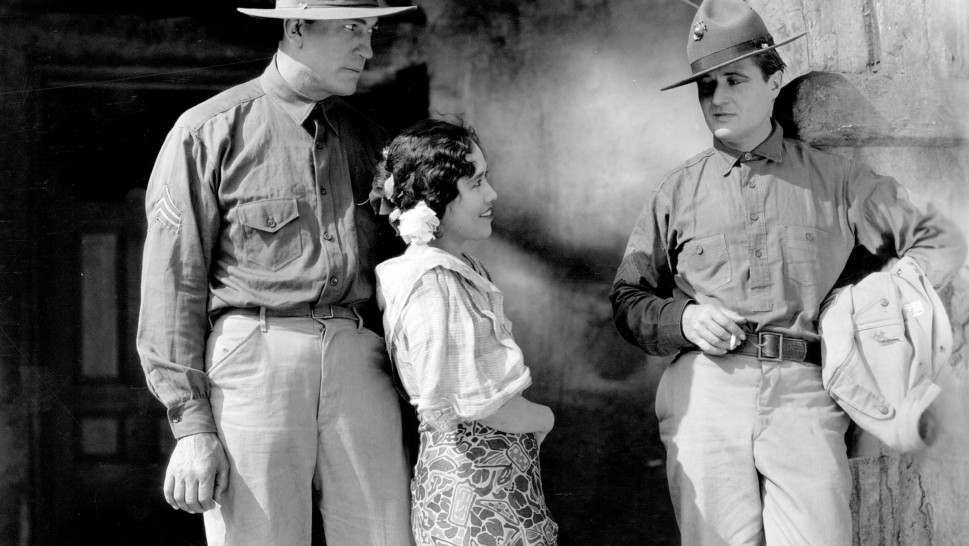


Action! Action! Action!
A Raoul Walsh Retrospective
It can be reliably argued that Raoul Walsh (1887-1980) remains the most dominant filmmaker of Hollywood’s studio era. As an auteur Walsh could be of the equal of Ford, Hawks or Hitchcock – or, at the very least, today he would well count among the “Pantheon” directors the late Andrew Sarris immortalized in his groundbreaking American Cinema: Directors and Directions of 1968. This retrospective counting seventeen features that Haden Guest has carefully and, if I may, brilliantly selected for viewing over the course of the spring semester will allow us to judge. Subject of Raoul Walsh: The True Adventures of Hollywood’s Legendary Director, Marilyn Ann Moss’s meticulously researched biography of 2011, Walsh counts among the mythic one-eyed moguls (with Ford and André de Toth) who knew how to conceive, shoot and edit films that were invariably finished on time and under budget. Indelible auteur, he brought innovation and signature style to a plethora of genres: the western, the woman’s film, melodrama, the musical, dance films, boxing movies, gangster potboilers, the sword-and-sandal (or peplum) epic, film noir, depression comedy, the war movie, the pirate movie, the period piece…. From 1913 to 1964, from A Mother’s Love (Pathé, filmed in Brooklyn) and Paul Revere’s Ride (also Pathé, shot in Fort Lee, NJ) to A Distant Trumpet (Warner Brothers) he was responsible for – mostly directing, often editing and, early on, acting in – 176 films.
In interviews his French and American enthusiasts held with him in his later years, reflecting on his past, he noted that he “made a lotta turkeys and a coupla’ good ones, too.” Never having won an Academy Award (an honor much to his credit), he is legendary for having made films that move quickly, from start to finish, that capture and hold our attention: never a dull moment, never a shot that fails to fit in a finely crafted mosaic. His films inspire Clouzot (They Drive by Night is the model for The Wages of Fear), Godard (the end of Breathless is cued on High Sierra), Spielberg (Desperate Journey is the matrix for a sequence in Indiana Jones, while the end of They Died with Their Boots On a model for the beginning of Saving Private Ryan), Scorcese (Gentleman Jim informing Raging Bull and The Bowery a blueprint for Gangs of New York), Tavernier (Colorado Territory he said, patterns the movement of La Princesse de Montpensier) and many others. Like those of the pantheon figures, many of Walsh’s features are those to which filmmakers and critics forever return.
Seen together, as will be the sampling in this retrospective, the works of this “filmmaker’s filmmaker” are much more than the sum of their parts. They attest to the history of the studio. Under the tutelage of Griffith – Walsh famously played John Wilkes Booth in The Birth of a Nation – the silent films are not only gems of montage, of on-location photography but also, tellingly, of the art of the hieroglyphic. Seen and read together, the films move effortlessly from place to place and from one situation to the next. Shot crisply and in deep focus, they capture their subjects at war with the milieus that shape them. A signature is close-ups of a gamut of faces that moves back and forth from the grotesque (the riffraff of Regeneration) to the sublimely sensuous (Miriam Cooper in The Greaser, Theda Bara in The Serpent, Gloria Swanson in Sadie Thompson…). We delight in polymorphous pleasure at the sight of Douglas Fairbanks’ biceps and nipples in The Thief of Bagdad just as we enjoy the figures (including Tyrone Power) in The Wanderer who wallow in the mud and slime of a pigsty. Evolution of the 89 silent films for which Walsh was director or actor between 1913 and 1929 shows that the director takes his cues from Griffith and, as he goes, genially and gracefully exceeds the work of his mentor.
It would be an oversight to miss what Walsh does with cinema at the cusp of the silent and the talkie. Already the sound cues, the noise and clatter, indeed the profanity and enthusing obscenity of What Price Glory? show how the director wove sound into the image before its advent. Viewers of our Archive’s near-pristine print will delight in lip-reading close-ups of Dolores Del Rio seductively double-binding her suitors in telling them to lay off and get laid; or inversely, of Victor McLagen inviting his enemy brother-and-lover, Edmund Lowe, to enjoy (the reader will pardon the author for NC-17 rating of the lip-read words that follow) getting fucked in the ass. Viewers of The Cock-Eyed World will laugh in seeing McLagen in a medium shot (his midsection cloaked by a doughboy’s hat) enjoying blow-job – or better, a below-job – his commanding officer imposes when he tells his sergeant he’s assigning him to engage “a dangerous mission.” If any war movies were ever to deconstruct the policy of “don’t ask, don’t tell” before its extinction, thanks to what Walsh does with cue and camera, these two features are great points of reference! Now if the sublime is the obverse of the grotesque (of which all great writers, from Rabelais to Hugo, are aware) it can be seen at the end of The Big Trail, the western epic (that at the box office was an epic failure) that launched the career of John Wayne. After a long and arduous journey where we witness how block and tackle is used to ease Conestoga wagons over high cliffs and into valleys below, upon reaching California, Wayne and his love are shot as tiny figures dwarfed among the great sequoias about them, lost in an overwhelming wondrous landscape. It may be thanks to the early virtue of silence and sound that Walsh was able to discover and to direct the greatest American male actor. He found in Wayne’s face and demeanor a silent star, in his voice untold tenderness, and in his body the modest and even self-effacing swagger we see in the Ringo Kid of Stagecoach, another silent film of the sound era.
In the films Walsh shot between 1929 and 1932 the indelible traits of a signature come forward. Thematically, which means to be brutally reductive, they include an obsession with an “other brother” who belongs to the silent era; a sensitivity to the ocular virtue that cinema makes of a paradoxical “depth of surface;” and, thanks to that virtue, that Walsh gained through the traumatic loss of his right eye in 1929, a trait that might be called a “selfless mythomania.” First, fraternity: in the McLagen/Lowe trilogy (noted above, that ends on a lovely flop, Women of All Nations, in which Bela Lugosi has a cameo) we have echoes of the relation that Walsh held with his brother George. A heralded and highly touted actor in the silent era, a man of magnificent musculature, an athlete from Fordham (for whom, like Fairbanks, apocrypha says that figurines were poured), George had the body but lacked the voice that could carry him beyond 1929. Brothers, however, remain faithful to one another, and thus in Me and My Gal we see him as a thug who scurries about in silence. Best of all, in The Bowery (and the Archive print is magnificent) he is the masked man – buff, ripped, bulging thighs in boxer pants – who plays John L. Sullivan (a character whom Ward Bond later becomes in Gentleman Jim). In The Bowery it is hard see how Wallace Beery and George Raft cannot be avatars of the trilogy’s couple, all the more because the film turns on the fabrication of a dummy, a sculpture rivaling the deadpan and deadening effect of Raft, a scurrilous “hero,” and the disgusting Beery, the man besotted by the effects of his name. As with McLaglen and Lowe, so also Beery and Raft: in the cinematic field, especially in the stunning company of Fay Wray, neither invites identification of any kind. Here Walsh’s cinema makes clear a proto-Brechtian distanciation that will move throughout the oeuvre and, arguably again, confer upon it a critical force equivalent to the films of Hitchcock or Ford. We experience visual distancing from siblings who love and hate each other runs in films that follow: The Roaring Twenties (Cagney and Bogart), They Drive by Night (Bogart and Raft), Manpower (Raft and Robinson), White Heat (Cagney and Edmund O’Brien) and others.
Second, depth of surface. In Sadie Thompson, one of the wettest films on record, Sergeant O’Hara (Walsh) looks at Gloria Swanson with love, care, and admiration—hardly as might any of Laura Mulvey’s famous male scopophiles. In a feature that launched remakes of Maugham’s “Miss Thompson” his clear eyes are those we see of an actor in andthe director of a film staging a watershed release of affect from the floodgates of repression. In In Old Arizona, a feature shot on dry vistas studded with Joshua trees, Walsh had been slotted to play the role of – who else – the Cisco Kid. Taken from an O. Henry novella, the film puts the Kid in rivalry with Sergeant Dunn (Edmund Lowe) for the charms of exotic Tonia Maria (Dorothy Burgess). One night, when actor-director Walsh was riding in a car returning to town from the shoot in Bryce Canyon, a jackrabbit jumped in the glare of the headlights. It struck and shattered the windshield that sent a piece of glass deep into his right eye. Rushed to a hospital, bleeding profusely, he survived at the cost of losing half of his vision. The actor’s career was done (Warner Baxter assumed the role of the Cisco Kid) but that of the great director began afresh. From then on Walsh’s films acquire an ever-present optical texture where, by virtue of allusions to the vagaries of vision, we oscillate between a binocular depth of field, say, of the kind associated with Renoir and a monocular vision that turns the screen into a flat surface that, perhaps, anticipates what Godard will exploit in extraordinary combinations of film and writing. Latent in the earlier work, the oscillation resonates as of 1928. It suffices to remember how El Brendel wears a star-shaped patch over his eye in Women of All Nations; recall shots of headlamps in Babyface Harrington and any of the films that feature motor vehicles; think of the “electric eye” of the garage opener that Ida Lupino uses to suffocate her boisterously joyous husband, Ed Carlson, in They Drive by Night; of the “evil eye” of the dog Pard who seals the destiny of its victims in High Sierra; to witness how an uncanny shadow of a chain cuts across the right eye of Cody Jarrett (Cagney), incarcerated, who murmurs with his enemy brother in White Heat; or merely consider the names of films, from The Cock-Eyed World or Big Brown Eyes to Objective, Burma!
The surface effects of the cinema are found in its hieroglyphics. Faithful to the silent tradition – witness the intertitles of Intolerance – that has viewers read the image to tease out relations of words, objects, space and depth of field, as if arching back to surrealists and anticipating the New Wave, Walsh tesselates his films with graphic forms. Already in Regeneration he cuts a line of writing on which is drawn Shamrock Queen, the name of the vessel that will go up in flames, to read (and thus to shatter the illusion of the narrative): Sham. In High Sierra, while in stir the hero obtains a “pardon” that releases him. “Pard” is the name of the dog that will precipitate his demise. In White Heat, a film ultimately about nuclear explosions and enucleating effects of fallout that we later see at the beginning of Hiroshima, mon amour, a despicable hero, an agent of the law, is named Fallon. He becomes Cody Jarret’s “kid brotha” who, when he discovers Fallon’s ruse, grinces and utters, “I fell for it!” When Jarret immolates himself at the end of the film, crashing out, he squints and closes his eyes in order to see what we cannot. When Shelley Winters, the captive damsel in Saskatchewan, reaches the top of a ridge in the Canadian Rockies, she remarks that she’s “on toppa’ the world,” referring to Cagney’s last words chiseled in our memories of White Heat. In Colorado Territory an aging and bedridden hooligan, in response to the protagonist’s question why criminal virtue has gone to seed, can’t find an answer, muttering, “well, I dunno, a cock-eyed world….”
Related to the visual texture of his films and their aural resonance, third, is a gentle mythomania. As Walsh continues to make his movies references to the growing oeuvre accrue and, as a result, it becomes a webbing of myth and fact. Crucial is the episode in High Sierra when the ill-fated protagonist, Roy Earle (Bogart), driving blissfully in his coupe over a mesa en route to executing what will be a botched heist from a hotel in Palm Springs (that will be redone with Jack Palance in I Died a Thousand Times), passing a slow-moving jalopy, meets a jackrabbit that crosses the road. He swerves to save himself and to avoid striking the other car. The episode, not found in John Huston’s shooting script, rehearses the traumatic moment during the shooting of In Old Arizona. In They Drive by Night the Fabrini Brothers (Raft and Bogart), their old truck having broken down, hike to a roadside diner, the locus amoenus of the depression movie. Lazy truckers, parking their buttocks on the circular stools, twist and turn when comely waitress Cassie (Anne Sheridan), sauntering in the aisle behind the counter (returning to stand behind a glass jar containing donuts that are in front of her midsection), delivers coffee to her customers. One of them remarks, “Classy chassis, Cassie!” To which she rejoins, wryly, in reference their loss and her gain: “Yes. And it’s all mine. And you couldn’t even afford one of the headlights!”
The tender side of the myth (lacking among many maniacal directors) can be found in a tendency to blur boundaries of gender and venture into affect without resolution. Walsh once said that he could never make a woman’s movie (“call up Bette Davis if you want!”). It may be because he was already doing them with men. Like the ephebe Wayne of The Big Trail, his men often bear the trappings of women. In the Flynn cycle (Gentleman Jim, They Died with Their Boots On, Desperate Journey, Objective, Burma!, even Silver River) we shiver at the delicate irony the hero brings to his roles: in Desperate Journey, in the heat of escape from Nazis in hot pursuit, Flynn and his cronies (Ronald Reagan and Arthur Kennedy) sputter to a halt. While Reagan plunges a stick into the vehicle’s fuel pipe (in deliciously erotic close-up), shattering the narrative, Flynn calmly quips, “This is the first time I’ve run out of gas with a bunch of guys in the car!” In his roles wise guy Cagney, who had been a “ladykiller” in other films often “becomes-woman”: he dies thus on the steps of church in winter at the gripping conclusion to The Roaring Twenties, while in White Heat, in solitude, standing in the wind in a dark night, the psychopath suddenly convenes with Gaia, the goddess Natura. In The Strawberry Blonde, in the role (like that of Bogart in High Sierra or himself in The Roaring Twenties) of the man who chooses to fall for the wrong love-object, the images make clear that he cannot summon words that would mediate or palliate the confusion of his affection. Where Walsh portrays women as women they gain agency: Lupino in all of the films becomes actress dominatrix, and Sheridan, too, over and beyond, Raft, her love-object in They Drive by Night, and notably Mae West in the often overlooked (and beautifully titled!) Klondike Annie. Early on, in a famous colloquy in Edinburgh in 1974, a propos Jane Russell in The Revolt of Mamie Stover, feminists Claire Johnson and Pamela Cooke rightly detected an alternative sense of gender in the oeuvre.
If, as Renoir famously said, a director spends a lifetime making one movie, Walsh’s mythic one would have been the orphic sequence that caps High Sierra. Roy Earle, escaping the police in scaled the eastern face of Mount Whitney, takes cover in a cranny but is soon lured outside when the dog Pard hustles up to meet him. His new love, Marie (Ida Lupino), who finds herself surrounded by cops who shove their genitals into her face, shrieks. Like Orpheus, he turns back… and a gunman perched on a ridge above (seen in a dazzling and vertiginous countertilt in extreme deep focus) shoots him in the back through the sight of a telescopic rifle. Striking the rocky surface, Earle’s dead body plummets to the ground. In what clearly chimes with endings of Greek tragedy, the chorus of police and a journalist (aptly named Healy) crowd around him and utter a couple of sarcastic codas. One of the most gripping moments in any film whatsoever (a point Godard knew when he shot the finale of A bout de souffle), the episode is iterated in other features. It is changed decisively (more on that below) in Colorado Territory, but it is also seen in Desperate Journey when Alan Hale, escaping over the rooftops of a city in Nazi territory, failing to jump successfully from one building to the next, elicits the scream from the woman (Nancy Coleman) who accompanies the group of Allies dressed as Nazis. It figures, too, in the snowy climes of Northern Pursuit when a Nazi (Helmut Dantine) ruthlessly shoots his victim, causing Errol Flynn’s friend, Laura McBain (Julie Bishop) to cry aghast. The sequence becomes a marvelous parody of itself in The Sheriff of Fractured Jaw when Kate (Jayne Mansfield) is called on to cry out in a comic rehearsal of the same situation.
Variations in these iterations tell more. Jacques Rancière noted that he became a cinephile when he first saw Winchester 73 and “the wild woman” of Colorado Territory. He could have been addressing a political aesthetic that is also part of Walsh’s signature – in consort with the three traits, noted above – prompting viewers to look at the critical underside of films that are products of a rapacious industry of pleasure. As High Sierra, Colorado Territory (and even White Heat) unwind, the mixed virtues of the protagonists become increasingly apparent. In the thick of “distanciation,” we affiliate with them at arm’s length. The poetics of Aristotelian tragedy, even pathos reminiscent of Oedipus who begins to see when he is blind, come at the end of High Sierra. Not so in Colorado. The law is hell-bent to get the villain, cornered high in the remains of a pre-Columbian culture nestled in the mountain, in a black hole – that the camera marks clearly as a rectum. They’ll get him “from behind.” Which the entitled scoundrels indeed do, but in a last flurry, wounded, having descended the slope, the hero and heroine meet and fire their six-guns directly at us, who in the penultimate shot become one with the posse that levels them in a barrage of bullets (a scene clearly modeling the end of Bonnie and Clyde). At that moment, when we wish that the couple would murder the agents of the law, the film implicitly turns on the industry of capital that produced it. Because it is a variant of High Sierra, it retrospectively calls in question the motives of the “media event” that had been staged when a radio reporter at the foot of the mountain turned the orphic tragedy into profit-motivated radio broadcast. When ideology is in question we suddenly think of the utopian socialism, prior to his murder, boss Ed Carlson (Alan Hale) brings to his Angelino truckers in They Drive by Night. A politics is at a remove which is paradoxically present in Walsh’s aesthetics.
Here and elsewhere the films draw critical attention to what might be a difficult relation with their modes of production. Sometimes we see the effect in Walsh’s singular use of diagonality, a way of looking across that image-field in order to make visible and to call into question its illusion of depth, hence its strongest ideological mechanism. The same holds for the extended tracks and pans that accompany men who move across thick vegetation in landscapes: in keynote shots in Desperate Journey, Objective, Burma! and Distant Drums abstract patterns of branches and leaves capture the eye, quickly superseding the narration the shots are designed to convey. Film qua film becomes paramount. At others, and this trait is ubiquitous from beginning to end, characters turn around, backside forward, so as to imply either not to give a damn about the spectators that we are in the movie theater or else, defiantly, to moon us. Taken in medium depth, Walsh’s two-shots often call authority in question: characters jaw with each other so as to cast in doubt what prompts them to say what they say. In The Cock-Eyed World when McLaglen barks an order from his superior. Lowe retorts, “Sez who?” McLagen: “Sez me!” Lowe: “O yeah? sez who?” Who says what and why? Who or what orders whom? At the end of the film, when the marines depart the island of which they have a mess, in the place of “The End,” the final title card reads, “Shove off, that’s all!” Who shoves whom and why? Should American military policy shove off or get shoved? Are we being told to we shove ourselves out of the theater and be done with the film?
In this sense, contrary to many of the so-called pantheon directors, Walsh is never sanctimonious: no homilies, no morals, no great lessons to be imparted, no aura for the duration of a viewing. Film as film. As he said when French critics queried him, asking what he thought were the three greatest virtues of a film, he replied: “Action, action, and then action.” To which the French responded, “Eh bien, you must be Aristotelian, because in the Poetics we learn that it is action, and not psychology, drives drama forward.” “Oh yeah? Okay, if you say so!” – Tom Conley, Abbott Lawrence Lowell Professor of Romance Languages and Literatures and of Visual and Environmental Studies, Harvard University




